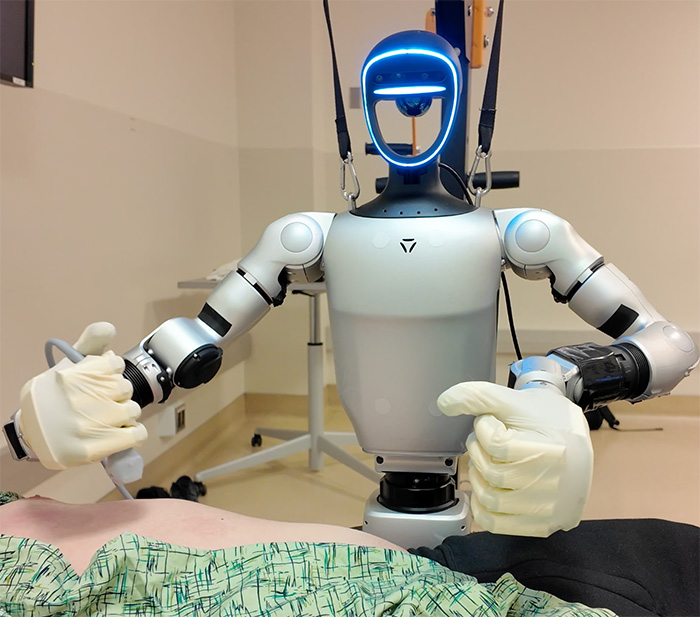The Robot Will See You Now
Humanoid robots could be a game changer in the operating room
Story by:
Published Date
Article Content
As waiting rooms fill up, doctors get increasingly burnt out, and surgeries take longer to schedule and more get cancelled, humanoid surgical robots offer a solution. That’s the argument that UC San Diego robotics expert Michael Yip makes in a perspective piece out July 9 in Science Robotics.
Why? Today’s surgical robots are costly pieces of equipment designed for specialized tasks and can only be operated by highly trained physicians. However, this model doesn’t scale. Despite the drastic improvements in artificial intelligence and autonomy for industrial and humanoid robots in the past year, these improvements haven’t translated to surgical robots. The scale of data required to train a truly capable artificial intelligence to perform surgery with today’s robots would be too labor-intensive and cost-prohibitive, especially on existing platforms and with current practitioners. Building datasets based on medical procedures also raises privacy issues.
But what if all the training data used by industrial humanoid robots could be made useful for training robots to perform medical procedures? This would be a game-changer, writes Yip, a professor in the UC San Diego Department of Electrical and Computer Engineering. The simplest way is to give arms and multi-fingered hands to our surgical robots, similar to the trend seen in industrial robots. Not only would this produce a new class of robots in the operating room—it would allow those robots to take full advantage of the AI foundation models that have been accelerating the capability of industrial robots learning new skills and assisting in a large variety of tasks.&
For example, a humanoid robot could help by holding an ultrasound probe or an endoscopic camera for the surgeon during a procedure, or help as a scrub nurse handing off instruments while maintaining a sterile field. These types of assistance are critical and currently performed by other surgeons or nurses, which take them away from helping other patients and can be physically draining. As a result, robots for these low-risk, common, time-consuming, and physically draining tasks would be hugely beneficial. But one can’t justify purchasing special-purpose robots for every new task. A general-purpose humanoid form factor makes the most sense in the long run in this regard as well, writes Yip.
Ultimately, as humanoid robots in industry build stronger AI foundation models, becoming more skilled at many tasks, and so too will humanoid robots participating in surgery in the operating room. Though not anytime in the near future, the promise is that one day, these robots will be a critical technology to addressing the skilled health care labor shortage challenges facing patients, doctors, and nurses around the world, Yip writes.
Yip lays out his argument in more detail in an upcoming paper, currently in preprint: Humanoids in Hospitals: A Technical Study of Humanoid Surrogates for Dexterous Medical Interventions

Photo: David Baillot/University of California San Diego
The robot will see you now: Foundation models are the path forward for autonomous robotic surgery
Michael Yip, Department of Electrical and Computer Engineering, University of California San Diego
Share This:
You May Also Like
UC San Diego is Strengthening U.S. Semiconductor Innovation and Workforce Development
Technology & EngineeringStay in the Know
Keep up with all the latest from UC San Diego. Subscribe to the newsletter today.



